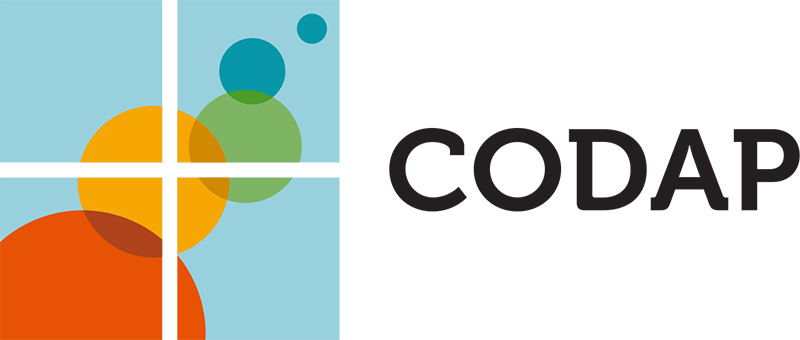Our Common Online Data Analysis Platform (CODAP) allows you to dig deep into the data all around you. Whether you’re investigating data you’ve gathered yourself via probes and sensors, maps of the travel paths of elephant seals and sharks, data streams from a simulation of global climate change or wins and losses from an online game of rock-paper-scissors, CODAP can help! CODAP is about exploring and learning from data from any content area, so it’s perfect for math, science, social studies, physical education classes and more.
Today, we are proud to announce our elegant new CODAP logo, developed by Derek Yesman of Daydream Design*.

We think this logo expresses the many faces of CODAP both concisely and beautifully. Looking at the world of data through the four panes of a window, you might notice different elements. Link them together with CODAP’s tools to see the big picture or to focus in on one or more relationships in the data. Naturally, different windows in the CODAP software open to permit data analysis of different aspects, yet the views remain linked at the same time, providing deep insights into the connections across different perspectives.
Do you see a scatter plot? We do, too. You’ll see lots of circles in CODAP – they represent individual data points or points summarizing data across experimental runs. Our new logo continues that circle theme, bringing in a family of different colors that evoke the many diverse disciplines that CODAP can tackle, all linked through the common power of data exploration.
There are also linear elements in the design that evoke bar graphs and standard chart views – the bread and butter of everyday data analysis.
Our CODAP software and logo continue the legacy of both Fathom and TinkerPlots, and we are proud to be building on this tradition of amazing data exploration tools. Our new web-based platform was created with National Science Foundation funding by Senior Scientist Bill Finzer. CODAP is open source software, free to use, adapt and extend. Contact us for more information and to start analyzing the data around you today!
* Longtime fans may be familiar with Derek’s work—he also designed the Molecular Workbench logo and our company logo.